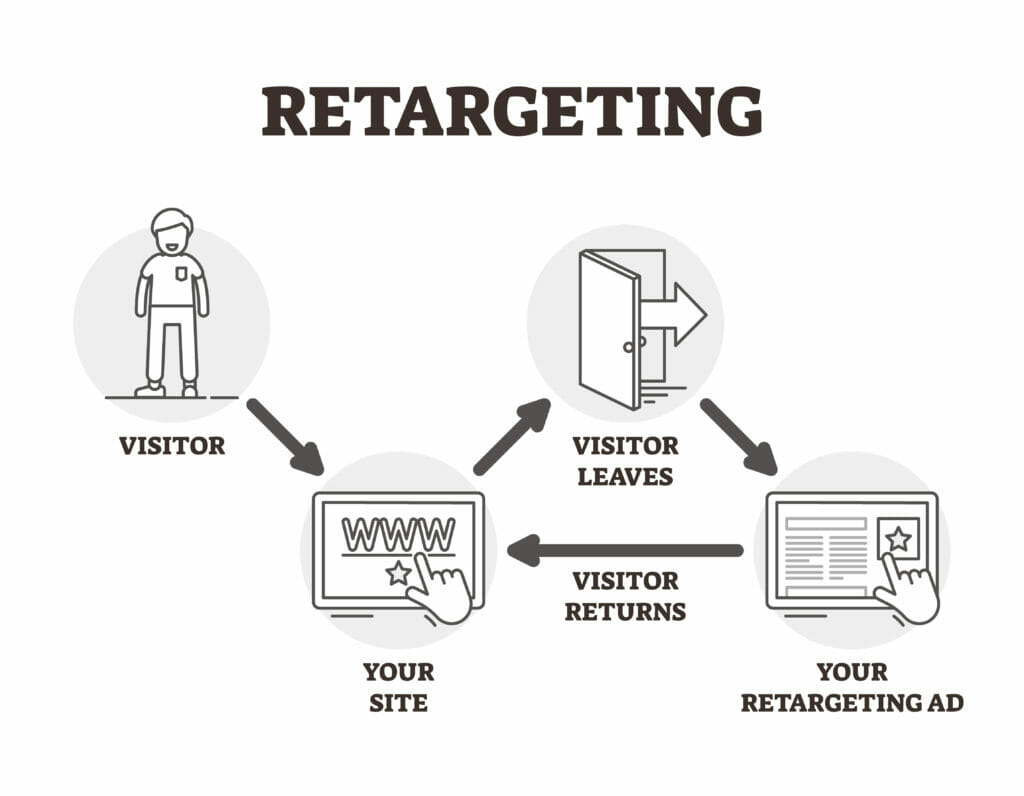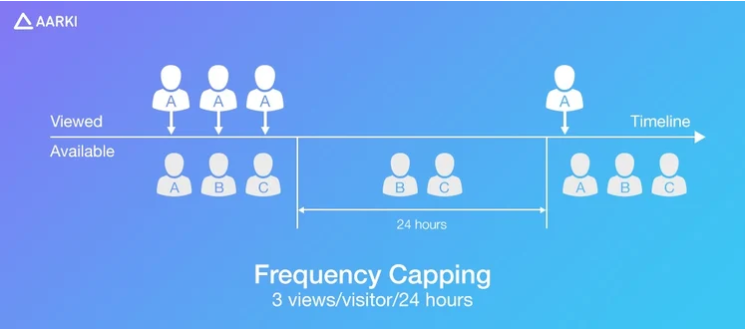Are you feeling left behind in the ever-evolving world of PPC retargeting? Are your competitors outpacing you with their campaigns while you’re falling short of your goals?

Retargeting is essential to PPC success, and if you’re not doing it right, you could be missing out on opportunities to engage with potential customers. According to 99Firms, retargeting can increase conversion rates by as much as 150%.
In this article, we’ll reveal five common mistakes you may be making in your retargeting campaigns – and how to avoid them to stay ahead of the competition. Keep reading to learn how to up your PPC retargeting game and take your campaigns to the next level!
- Mistake #1: Poorly Defined Audience Segmentation
- Mistake #2: Overlooking Frequency Capping
- Mistake #3: Ineffective Ad Creatives and Messaging
- Mistake #4: Ignoring Conversion Tracking and Attribution
- Mistake #5: Neglecting to Optimize PPC Retargeting Campaigns
- Choose This Orange County PPC Agency To Streamline Your PPC Retargeting Campaigns
Mistake #1: Poorly Defined Audience Segmentation
When retargeting, one of the most critical steps is defining your audience. You can’t target the right people with your ads without proper segmentation. You must understand your ideal customer and how best to reach them to ensure your ads reach the right audience.
Common Segmentation Mistakes
Some of the most common segmentation mistakes include :
- Failing to narrow your audience enough: If you’re targeting too broad an audience, your ads won’t reach their intended recipients.
- Not using demographic data: Failing to use demographic data can limit your understanding of who you’re targeting and prevent you from optimizing your campaigns for the right audience.
- Not including enough data points: You should strive to include as many data points as possible and refine your audience segments as needed.
- Not taking advantage of lookalike targeting: Lookalike campaigns can be a great way to reach new people with similar characteristics to your target audience.
By avoiding these common mistakes, you can ensure that your retargeting campaigns reach the right people.
Tips for Effective Audience Segmentation
Follow these tips to ensure you’re defining your audience properly in your campaigns:
- Start with a small, specific segment: Begin by targeting a small, very specific segment with your ads and then expand if necessary.
- Leverage data points: Use data points such as demographics, purchase history, web behavior, and interests to create more targeted segments.
- Utilize lookalike campaigns: Lookalike campaigns can help you target users with similar interests and behaviors to those in your existing customer base.
- Test different segments: Test different segments to determine which ones are most successful and adjust as needed.
- Reevaluate your audiences regularly: Revisit your audience segments and refine them as needed to ensure they’re still relevant.
Mistake #2: Overlooking Frequency Capping

Frequency capping is an integral part of retargeting campaigns as it helps to ensure that your ads are not shown too often. It allows you to restrict how often the same user sees an ad. This helps to prevent users from becoming overwhelmed or annoyed with your ads, which can lead to a negative experience and reduce the effectiveness of your campaigns.
Consequences of Not Using Frequency Capping
Here are some of the consequences of not using frequency capping:
- Ad fatigue: If users are exposed to your ads too often, they may become tired of them and quickly tune them out.
- Annoyed customers: Too many ads can be intrusive and annoying, leading to a negative customer experience.
- Reduced impact: Users may become less effective if they become accustomed to seeing your ads.
- Wasted ad spend: If ads are shown to the same users too often, you could be wasting valuable ad spend.
Recommendations for Setting Appropriate Frequency Caps
- Monitor and adjust as necessary: It’s important to monitor your campaigns and make adjustments to ensure the frequency cap works as intended.
- Consider user engagement: Different users may require different caps depending on their level of engagement with your ads.
- Test different caps: Try different caps to determine which ones are most effective and adjust as needed.
- Utilize technology: Leverage tools and technologies to automate frequency capping and simplify the process.
By following these recommendations, you can ensure that you are setting appropriate caps for your campaigns and maximizing the effectiveness of your retargeting efforts.
Mistake #3: Ineffective Ad Creatives and Messaging
Ad creatives and messaging play an essential role in the success of a retargeting campaign. Poorly crafted ads with ineffective messages can lead to low engagement with your target audience, reducing brand awareness and conversions.
Creating ads with compelling messaging and eye-catching visuals is crucial to ensure the success of your retargeting efforts. This will help capture the attention of users who have already interacted with your brand while providing a positive customer experience.
Common Mistakes in Ad Creatives and Messaging
- Generic ads: Avoid creating generic ads that don’t speak to a specific user. No one will be interested in ads that look the same as all the others.
- Outdated information: You may target users who have interacted with your brand, so update ad copy and visuals regularly to keep them relevant.
- Poorly written copy: Ads should be concise and to the point. Make sure that your message is clear and easy to understand.
- Not giving users an incentive: If you want to capture user attention, give them a reason to click on your ad. Offering discounts or special offers can be a great way to entice users to take action.
Tips for Creating Engaging and Relevant ad Creatives
- Focus on user needs: Be sure to tailor your ads to the specific needs of your target audience. For example, if you target users who have already purchased from your store, try highlighting new products they may be interested in.
- A/B test ads: Test different ad creatives and messaging to see which performs best. This will help you optimize your campaigns and ensure that they are effective.
- Incorporate visuals: Ads with visuals are more likely to capture user attention. Use high-quality images, videos, or GIFs to make your ads stand out.
- Stay consistent: Maintain consistency throughout your ad creatives using the same color scheme, font, and messaging. This will make it easier for users to recognize your brand.
- Track performance: Monitor the performance of your ads over time. This will help you make adjustments and optimize for the best results.
Mistake #4: Ignoring Conversion Tracking and Attribution
Conversion tracking and attribution are critical metrics for measuring the success of retargeting campaigns. Without them, you won’t be able to gauge the effectiveness of your campaigns accurately.
By setting up conversion tracking and attribution, you can track leads and sales generated from retargeting campaigns and measure your return on investment. This will help you optimize your campaigns for better results.
Common Tracking and Attribution Errors
- Failing to set up tracking correctly: Your campaigns may not track properly if you make mistakes while setting up conversion tracking or attribution. Double-check your settings and ensure that everything is set up correctly.
- Not tracking all conversions: Make sure you track all the activities and events that indicate user engagement, such as clicking a CTA or submitting a form.
- Not optimizing for multiple channels: Make sure your tracking and reporting are set up to measure performance across multiple channels, such as display ads and social media. This will give you a more complete picture of your campaign’s performance.
Best Practices for Setting up Accurate Conversion Tracking and Attribution
- Utilize a tracking pixel: A tracking pixel is a piece of code that tracks user engagement and conversions on your website. Setting up a tracking pixel is the first step in accurately measuring conversions from retargeting campaigns.
- Measure all channels: Set up tracking for all your channels in your retargeting campaigns. This will allow you to measure performance across various platforms and better understand how your campaigns are performing.
- Use a multi-touch attribution model: Multi-touch attribution models track user engagement across multiple touchpoints and provide a more accurate picture of how each touchpoint contributes to conversions. This helps you measure the effectiveness of individual channels and optimize your campaigns accordingly.
- Ensure all tracking tags are installed correctly: If any tracking tags are not set up correctly, you may miss out on valuable data essential for accurate attribution. Double-check your settings and ensure that everything is set up correctly.
Mistake #5: Neglecting to Optimize PPC Retargeting Campaigns
Continuously optimizing your retargeting campaigns is essential for success. Optimizing your campaigns on an ongoing basis can help you identify areas of improvement, target more relevant audiences, and increase your return on investment. Neglecting it can lead to lower click-through rates, wasted ad spend, and missed sales opportunities.
Common Optimization Mistakes
- Not adjusting bids: Bidding too low or too high can greatly impact the success of your retargeting campaigns. Make sure you’re continuously adjusting bids to ensure you’re getting the most out of your budget.
- Not segmenting audiences: Avoid generalizing when targeting potential customers. Segmenting your audiences into smaller, more targeted groups can help you personalize your ads and reach the right people at the right time.
- Not testing different ad types: A/B testing can help you determine which ad type (e.g., video, banner, etc.) works best for your target audience. Test different formats to ensure you’re delivering the most compelling content.
- Not optimizing landing pages: Ensure your pages are optimized for each ad. This will help you deliver a better user experience and increase conversion rates.
Tips for Effective Retargeting Campaign Optimization
- Start with small, targeted campaigns: It’s essential to start with smaller, more focused campaigns so you can test and refine your strategy.
- Analyze current campaigns: Look at your current campaigns to identify areas of improvement and make adjustments as needed.
- Don’t neglect your creativity: Keep your creative fresh and engaging to deliver the most compelling message to your target audience.
- Test, test, and test again: Ensure you’re continuously testing different campaigns, ad types, and budgets to ensure you’re getting the most out of your retargeting efforts.
Choose This Orange County PPC Agency To Streamline Your PPC Retargeting Campaigns
The Flying V Group is an Orange County PPC management agency that offers comprehensive, customized digital marketing services to help businesses optimize their retargeting campaigns.
Our team of experienced professionals has the in-depth knowledge and expertise to create laser-focused campaigns that deliver results.
We understand the importance of continually analyzing, testing, and optimizing campaigns to maximize ROI. From creating compelling ads to targeting the right audience, we can help you craft an effective retargeting strategy that resonates with your target audience and brings in the desired results.
Contact us today to use our expert services and streamline your retargeting campaigns. Let us help you drive more conversions and increase your ROI!






0 Comments